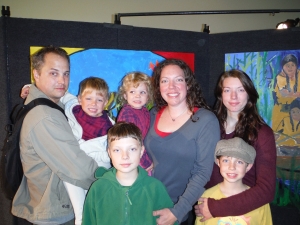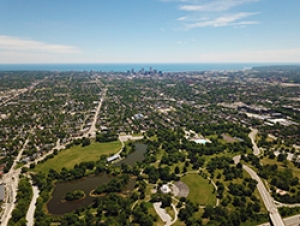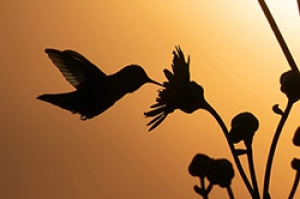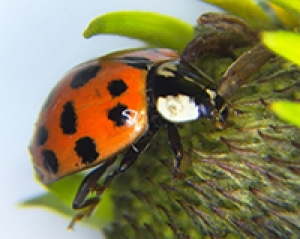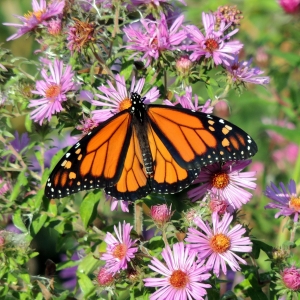

Guest Blogger
We are proud to include a large community of voices in our blog. Volunteers, partners, community members, etc. are encouraged to share their stories with us!
"I can't imagine raising my children without the UEC" - The Madson Family
10 years ago during Doors Open Milwaukee, my five kids and I happened upon this unusual place in the Silver City District’s Menomonee Valley and were a bit confused by what we found. While we thought the building was beautiful and the people kind, we didn’t quite understand how it all worked.
When a Child Wants to Share a Connection to Nature
“You wanna see my fish?”
Eighteen participants sat in a circle of camp chairs looking at Ken, then at the small girl with the bucket. She was about five years old and on a mission.
Ken had not noticed her as she walked toward the circle. He continued to focus on the session-topic of volunteerism at the Urban Ecology Center. The group had gathered as part of a multi-day introduction to the model — connecting people in cities to nature and each other — pioneered in Milwaukee. The UEC staff was bringing their expertise as an urban environmental education and community center to people from cities across the U.S. and other countries.
Research and Community Science intern reflections
What was it like to be a Research and Community Science intern at the Urban Ecology Center?
Where do I even start? I met a lot of passionate people and did several interesting animal surveys. If you stopped by any of the Urban Ecology Center (UEC) branches during the summer, you probably found three young adults with clipboards in hand and backpacks strapped tight walking through the parks. Depending on what time of the summer you came, we either looked slightly confused or highly confident (I am happy to say that the latter was at the end of the summer).
The Natural Bird GPS
I have always been interested in the unique physiology and behavior of our local avian friends; however, my internship this summer with the UEC has further sparked my interest in their migratory patterns. As one of the Community Science and Research Interns, I had the unique opportunity to travel to Door County for the annual Bioblitz. This event consists of several passionate scientists from around the state meeting and conducting biological surveys for an area of interest- basically a bunch of nerds doing what they love. As a part of this, I had the chance to participate in bird banding.
The Nuts and Bolts of Snake Research
Snakes get a bad rap. For many of us, it is instinctual to feel a sense of imminent danger when these critters are near. As many of you may know, snakes are reptiles. Herpetology (the study of reptiles and amphibians) stems from the Greek word ‘herpton’ which literally refers to things that creep and crawl. The first time I held a snake was in high school. At the time, I was intimidated to touch a scaly Red-tailed Boa in front of me—as were many of my fellow classmates (crouching on chairs with hesitant and fearful glances). Despite all that, I slowly reached out my hand and was met with smooth overlapping scales and a small flickering forked tongue. From then on I was in awe of these critters and became passionate about snake conservation efforts.
Plastic, a Major Polluter: How You Can Take Action
The world is at a tipping point with plastic pollution. Several countries are stepping up to make drastic changes and to ban single-use plastic in the wake of political and public pressure to wean us off this toxic convenience product. The United States is lagging behind, though many people are becoming aware of the problem and some states are looking at regulating plastics. The problems are our current approaches to tackling plastic pollution focus on small-impact solutions, which are well-intentioned and personally educative but are being quickly absorbed and morphed by the growth of global plastics production.
The Double Spiral: UEC Model Tackles Age-old Urban Planning Philosophy
Beginning as early as the 1850s and continuing for over a century, urban planners increasingly focused on grand designs for parks that would restore communities by providing a place of leisure and recreation. Seeing the transformation of rural America and the expansion of urban populations, it seemed that the loss of contact with open spaces created pathological conditions in cities.
Where Art Meets Ecology
I got started volunteering at the Urban Ecology Center through small mammal monitoring in the summer of 2012 and have been fortunate enough to help with that project at least a few times every summer since, alongside numerous other projects. These opportunities and the UEC have helped me get to where I am professionally, granted me steady friendships, taught me so very much, and, most importantly, welcomed me, enthusiastic quirks and all, with open arms.
Brilliant Beetles
Who doesn’t love living creatures that are brilliantly colored, small and abundant in their desired environment? Beetles have been treasures, delicacies, and pets for thousands of years.
Just like feathers have been used in fashion, so too have beetle wings. Over the summer, my dentist was preparing for an Indian family wedding in Canada. She was painstakingly embroidering metallic, vibrant colored beetle wings (beetlewing embroidery) onto the wedding gown.
Once you’ve read Fabre, you’re never alone
I’m not a professional scientist. But animal stories, biographies of scientists and works of natural history have always been my favorite reading material. Since childhood I’ve been nourished by the prose of ones who observe, measure and count; imagine and experiment. I still have natural history books I acquired as a child. One of them is Animal Behavior from the Life Nature Library series. It was published in 1965; presented as an introduction to what the editors of the time called the “infant science” of ethology.
Copyright © 2023 The Urban Ecology Center

